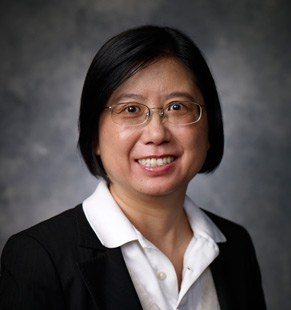Dr. Li Zhang
- Professor of Biological Sciences
- Cecil H. and Ida Green Distinguished Chair in Systems Biology Science

The legacy of Cecil H. and Ida Green at The University of Texas at Dallas was to establish in Dallas a world-class cohort of faculty and students in the new domain of integrated interdisciplinary biomedical research. The resources and talents of UT Dallas and UT Southwestern are combined under the support and guidance of the two institutions’ Green Centers. Endowments were generated for faculty members whose research expertise lies at one of the interfaces between biomedical science and physical, mathematical, computational or engineering science, emphasizing in particular research that will create synergy with research at UT Southwestern. This chair was established in 2005. Zhang was appointed as its first holder in 2007.
“I have always been very proud to contribute to the education of a very large number of excellent students in the Dallas-Fort Worth area in biological sciences, and to work hard to enhance UTD’s reputation and strengths in biological research.”
Dr. Li Zhang has spent her career exploring a very specific area of biology that impacts the entire body – heme, the iron-containing molecule in hemoglobin that binds to oxygen for distribution and gives blood its deep red hue.
Investigating the molecular mechanism of oxygen sensing and heme signaling is the main objective of her research.
“Heme has a ‘Jeckyll and Hyde’ aspect to it,” Zhang said. “If produced correctly, it is vital to life, but when abnormalities are present in heme production, it can lead to life-threatening problems.” In 2007, Zhang arrived from Columbia University to UT Dallas, where she is a professor of biological sciences in the School of Natural Sciences and Mathematics.
Zhang’s lab combines approaches of molecular and cellular biology with genomics and computational approaches. For example, Zhang worked with a colleague at the Memorial Sloan-Kettering Cancer Center in New York in 2008 to develop a novel computer algorithm to answer a biological question: What genes control cells when oxygen is lost? Using massive data sets, the researchers looked for patterns that provided genetic snapshots of the state of the cells.
“Before scientists in our field began to team like this – microbiologist with computational biologist – it was like seeing just a small piece of the sky,” Zhang said. “Now … we can see the whole sky.”
Zhang has published many research articles in areas of biological sciences ranging from molecular biology to genomics, and edited and contributed to a book about heme biology in 2011.
She holds a doctorate in biochemistry from the University of California at Los Angeles and completed her postdoctoral training in molecular biology and molecular genetics at the Massachusetts Institute of Technology. She earned a bachelor’s degree in chemistry from Zhongshan University in Guangzhou, China.